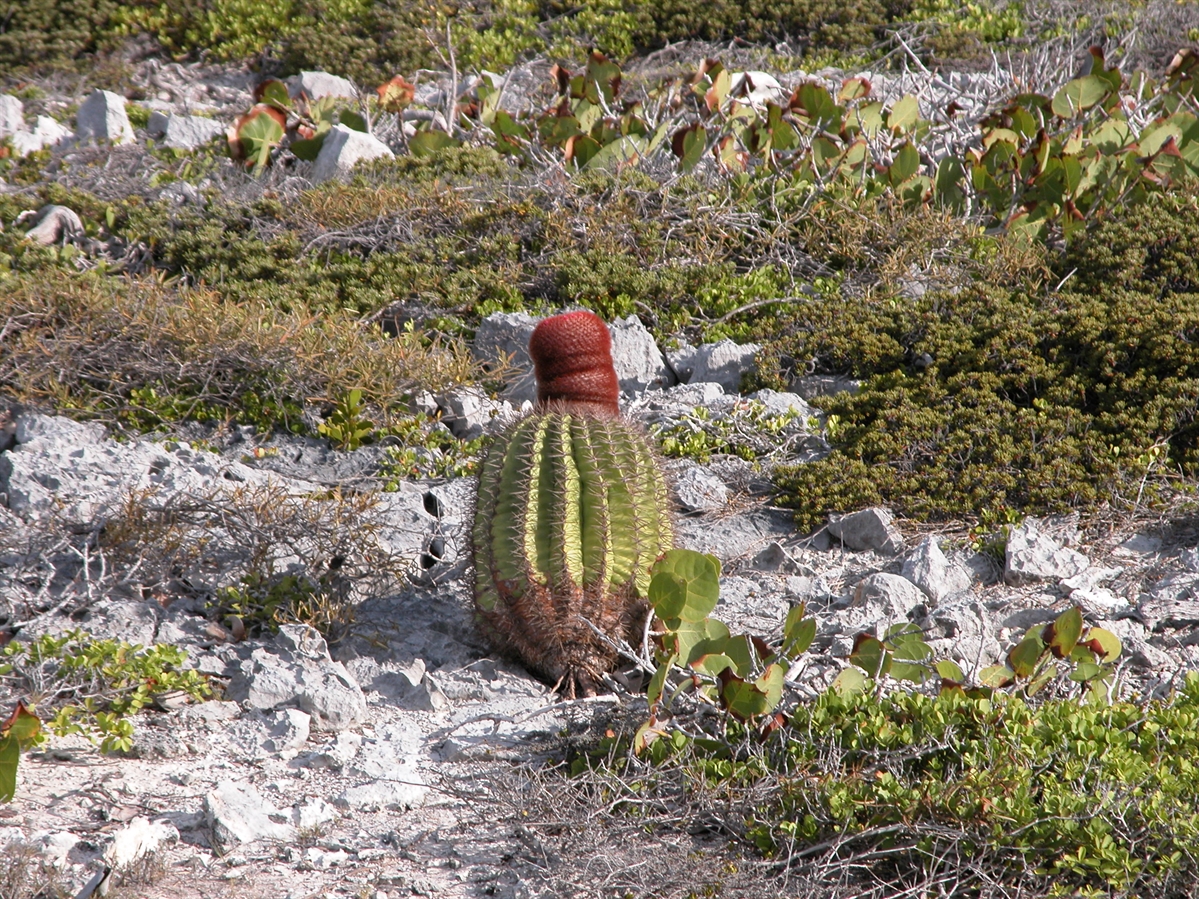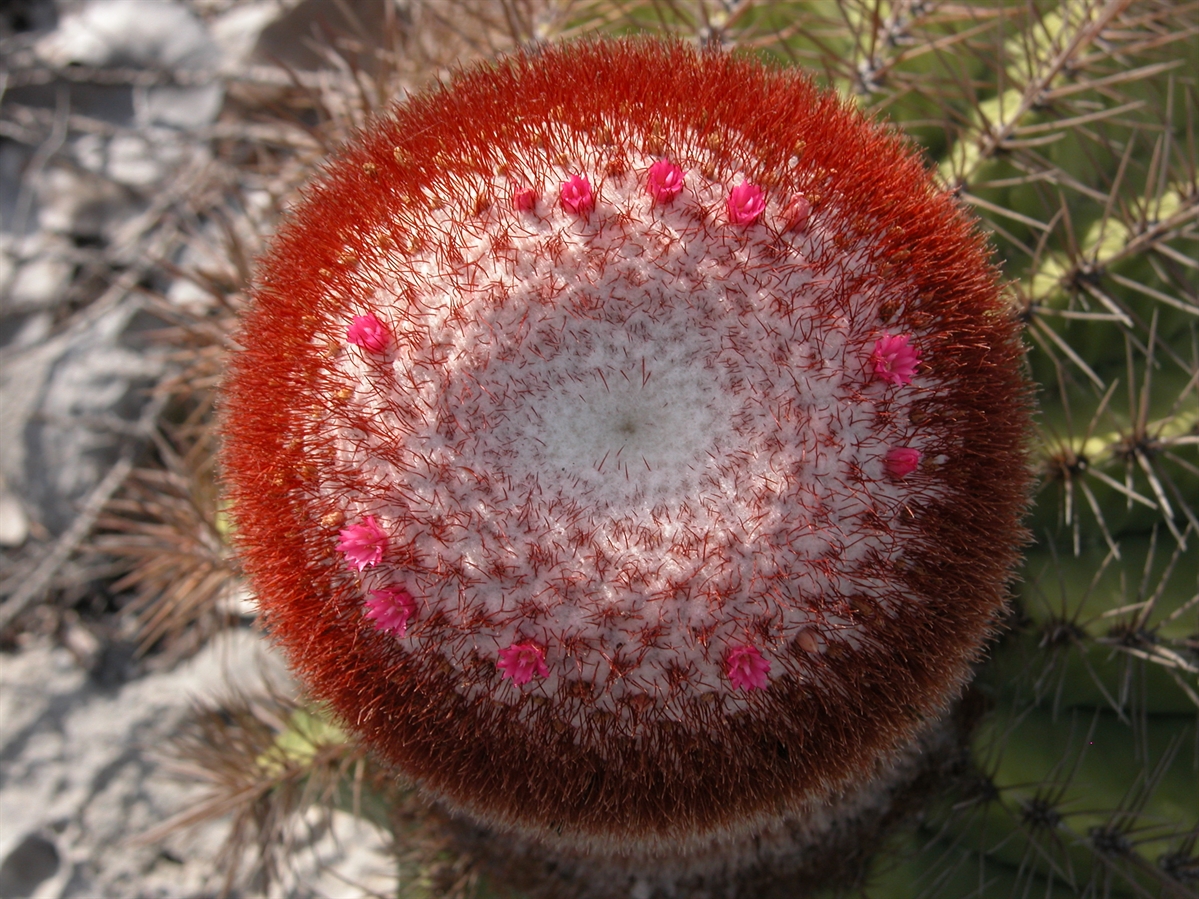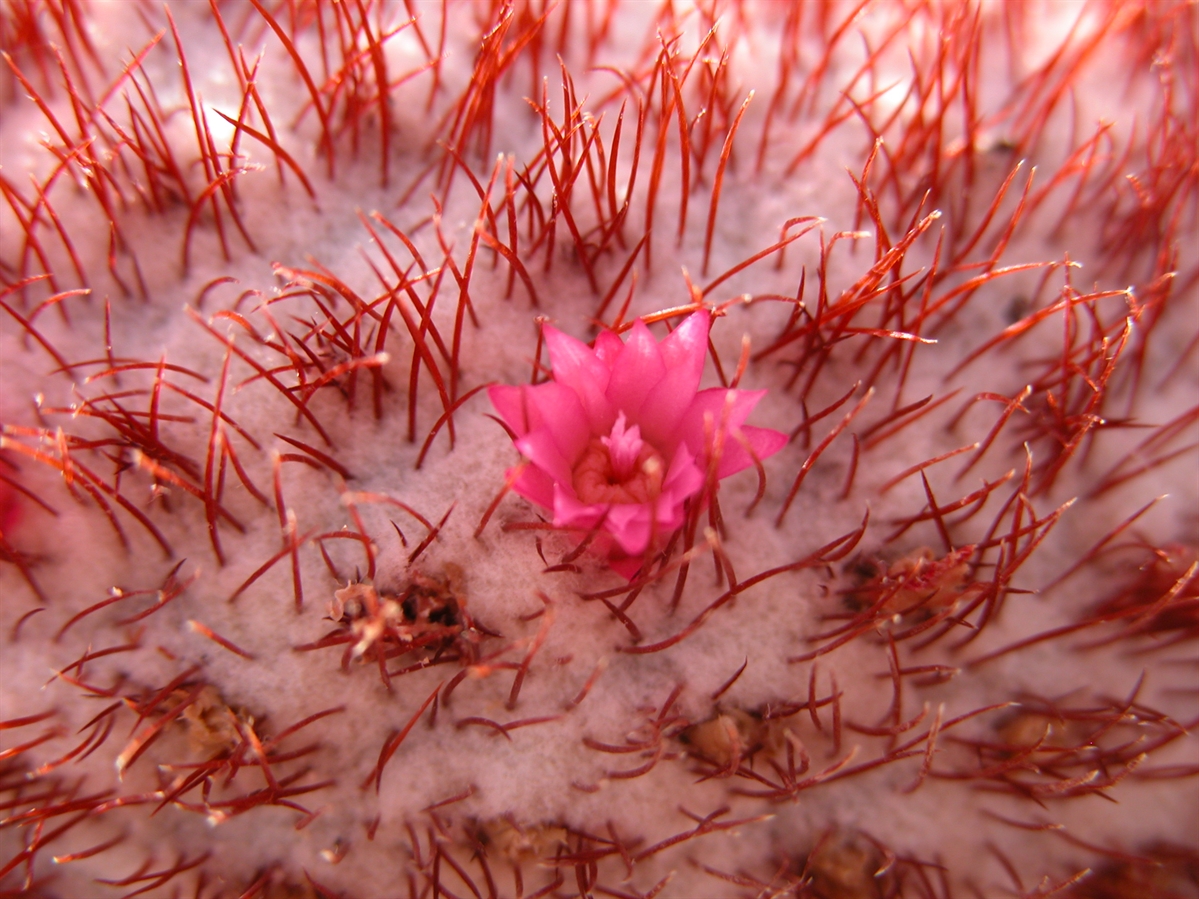Habit: Melocactus intortus grows as unbranched, almost cylindrical, succulent shrub to 75 centimeters in height. The trunk is up 35 centimeters in diameter, with up to 20 ridges. On the ridges areoles, 1-2 cm apart, have up 15 radiating spines each.
The complete, perfect, actinomorphic flowers are arranged solitarily on areoles on the cephalium (elongated stalk at top of cactus where flowers emerge) that can be up to 15 centimeters in height. The flowers are to 1 centimeter in width. The calyx has numerous pink sepals. The corolla has numerous pink petals, and there are numerous stamens. The calyx, corolla and androecium are fused to form a short hypanthium. Inside the flower at the base of the hypanthium are nectaries. The ovary is inferior with a single locule and numerous seeds. The fruit is a bright pink/red berry at maturity with black seeds.
Habitat: Melocactus intortus grows in exposed locations such as hilltops in Dry Broadleaf Evergreen Formation-Shrublands and Dwarf Shrublands, and Rocky Shores.
Distribution: Melocactus intortus occurs in the southern island groupings of the Lucayan Archipelago as well as the Lesser Antilles.
Medicinal/Cultural/Economic usage: Melocactus intortus is not known to be used medicinally in the Lucayan Archipelago.
As with all cacti it is CITES listed.


